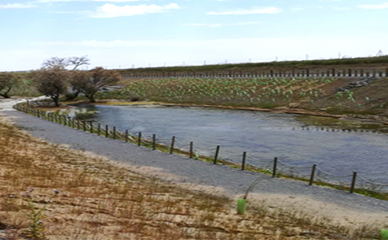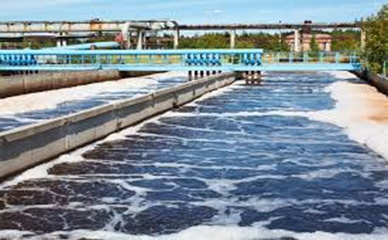
The «WATER SENSITIVE URBAN DEVELOPMENT», DUSA (evolution of «Water Sensitive Urban Design», WSUD) represents a new paradigm in urban development planning and design in order to minimize impacts on the natural water cycle and protect the health of aquatic ecosystems. The aim is to minimise the pressures on water bodies and to achieve good water status. It promotes an approach to urban development that is adapted to the natural characteristics of the sites or locations, that protects natural ecosystems, and that optimizes the use of water as a resource.
Water engineering is integrated into the DUSA, providing sustainable solutions for the water cycle in urban areas; the aim is to manage all the subsystems of the urban water cycle efficiently.
Some specific DUSA objectives are:
– To reduce runoff flows, both in volume and in maximum flows; erosion processes are reduced; hydromorphological impacts are minimised.
– To reduce pollution and minimise the discharge of polluted water into the natural environment through any of the flows.
– Protect the quality of surface and ground water.
– Incorporate the collection, treatment and use of runoff, including water from roofs. The aim is to ensure that rainwater does not suffer any type of deterioration or contamination, to eliminate any that it may have (by means of soft techniques or bioremediation) and to use it economically and efficiently for the maintenance of green and recreational areas (or other municipal uses), for the recharging of the phreatic water table or for its return to the natural environment free of contamination and with controlled flows.
– Minimize demand on the water supply system.
– Minimize the generation of wastewater. Helping to improve the operation of existing sanitation infrastructures
-It helps to reduce infrastructure costs for transporting and treating wastewater by reducing the volumes of water to be treated.
– Reducing the entry of rainwater into the sewage system to avoid increasing its contamination, overloading the network and its subsequent discharge into the natural environment, overflows from highly contaminated unitary systems (UDS).
-Increase public facilities in urban areas through the integration of multiple-use spaces, such as gardens or parks, which are also integrated into the landscape. It contributes, facilitates and encourages the increase of vegetated surface in urban areas, simultaneously providing new, high quality water resources for their maintenance.
The new strategies for managing rainwater pollution are based on the use of Sustainable Urban Drainage Techniques (SDUS). Depending on the location of the sanitation or drainage system where they are applied:
CONTROL AT ORIGIN: these are measures applied to elements of the drainage system prior to their incorporation into the drainage or sanitation network.
BOTTOM WATER CONTROL: these are measures applied in the sewage network or in the WWTP.
These strategies are also integrated in the so-called «LowImpactDevelopment» (LID) and «Green Infrastructures». There is already a long history of implementation and exploitation of these techniques in the rest of Europe and the USA, but very little in Spain, and almost none in Galicia. The TDUS were already included as a strategy for rainwater management in the Technical Instructions for Hydraulic Works (ITOHG).
When in a constructed and altered urban area it is a matter of integrating the TDUS or DUSA strategies, one speaks of «URBAN HYDROLOGICAL REHABILITATION».
In this line of research, it is worth highlighting the work carried out in recent years in the SOSTAQUA project (Cénit project) in which the recovery of rainwater in all sections of the urban water cycle was analysed in detail.
Specific lines of research
– Characterization of pollution of runoff from urban and industrial areas in rainy weather.
– Control of the flows (flows and pollution) of runoff water at source by means of Sustainable Urban Drainage Techniques (SDUS).
– Hydrological diagnosis of urban and industrial areas and preparation of hydrological rehabilitation plans through the integration of TDUS.
– Characterization and treatment of runoff from highways and roads with high traffic intensity.
Specific Technical Assistance actions or products
Characterization of pollution flows in rainy weather in rainwater drainage systems:
– Analysis of the drainage basin and development of numerical simulation models of flows and pollution (SWMM or Infoworks software).
– Instrumentation of control sections (draughts, flows, contamination by means of sampling or continuous probes).
– Calibration of numerical models.
– Analysis of solutions looking for the optimal environmental cost/benefit.
Proposal of solutions, sizing and design of Sustainable Urban Drainage Techniques.
Characterisation and proposal of control and treatment systems for motorway run-off water.



